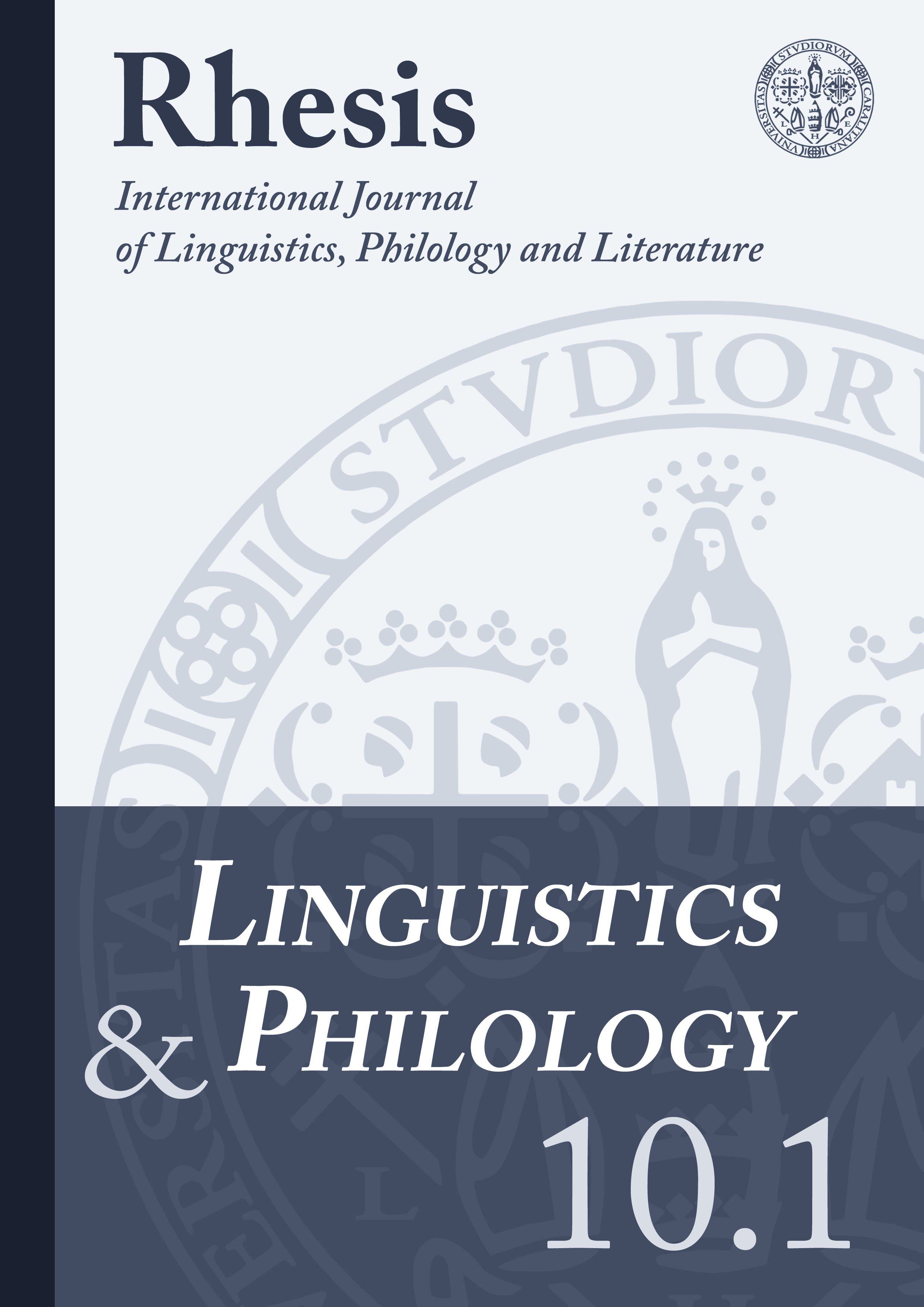Las expresiones idiomáticas en la enseñanza/aprendizaje de ELE: un estudio sobre el nivel intermedio (B1/B2)
Abstract
The studies carried out thanks to the lexical approach (Lewis 1993) testify to the importance of teaching the phraseological units for a better development of the communicative competence since they allow to learn groups of words. The lexical units are characterized —moreover— by their high frequency of use in conversation and by being used in multiple communicative situations, with various registers and in different types of texts. In this study, the focus will be on a concrete type of lexical unit, the idiomatic expression, which the Common European Framework of Reference (CEFR) suggests to present in the highest levels, specifically from C1; however, here it is proposed that, in the case of learners of Spanish whose mother tongue is Italian, or in the case of learners of neighboring languages, the teaching of these units would be already organized at an intermediate level (B1/B2), since our experience shows that if introduced into programming, learning takes place even at these levels. At first these lexical units will be described from a theoretical point of view, then some choices / presentation strategies will be exposed in the classroom and finally the corpus will be shown with the data of the exams results (ie, data related to learning) of the B2 level learners. These expressions are widely used by natives; hence the importance of teaching them so that the learner won’t just recognize them and use them, but also for him/her to fit into the linguistic community of the language they are learning.
Downloads
References
Consejo de Europa (2002), Marco común europeo de referencia para las lenguas: aprendizaje, enseñanza, evaluación, Madrid, Ministerio de Educación, Cultura y Deporte,
Corpas Pastor, Gloria (1996), Manual de fraseología española, Madrid, Gredos. Corpas Pastor, Gloria (2000), ‘Acerca de la (in)traducibilidad de la fraseología’, en Corpas Pastor, G. (ed.), Las lenguas de Europa, estudios de fraseología, fraseografía y traducción, Granada, Comares, 483-522.
Corpas Pastor, Gloria (2003), Diez años de investigación en fraseología: análisis sintáctico-semánticos, contrastivos y traductológicos, Madrid, Iberoamericana. Detry, Florence (2015), ‘Retos iniciales en la comprensión y memorización de las expresiones idiomáticas en clase de ELE’, MarcoELe 21
Higueras García, Marta (1997), ‘Las Unidades Léxicas y la Enseñanza del Léxico a Extranjeros’, REALE 8, 35-49,
Hymes, Dell (1971), ‘On communicative competence’, Filadelfia, University of Pennsylvania Press; [Versión española: ‘Acerca de la competencia comunicativa’, en Llobera Cánaves, Miquel; Hymes, Dell; Hornberger, Nancy (1995) (eds.), Competencia comunicativa. Documentos básicos en la enseñanza de lenguas extranjeras, Madrid, Edelsa, 27-46].
Instituto Cervantes (2006), Plan Curricular del Instituto Cervantes. Niveles de referencia para el español, Madrid, Instituto Cervantes, Biblioteca Nueva https://cvc.cervantes.es/ensenanza/biblioteca_ele/plan_curricular/ (acceso 08/06/2019).
Lewis, Michael (1993), The Lexical Approach, London, Language Teaching Publications.
Lewis, Michael (1997), Implementing the Lexical Approach, London, Language Teaching Publications.
Lewis, Michael (2000), Teaching Collocation. Further Developments in the Lexical Approach, London, Language Teaching Publications.
Morante Vallejo, Roser (2005), El desarrollo del conocimiento léxico en segundas lenguas, Madrid, Arco/Libros.
Muñoz-Basols, Javier (2015), ‘Enseñanza del lenguaje idiomático’, en Gutiérrez-Rexach, Javier (ed.),Enciclopedia de Lingüística Hispánica, vol. 2,London-New York, Routledge,442-453.
Nattinger, James y De Carrico, Jeanette (1992), Lexical Phrases and Language Teaching, Oxford, Oxford University Press.
Navarro, Carmen (2008), Aspectos de fraseología contrastiva, Verona, Fiorini.
Negro Alousque, Isabel (2012), ‘La traducción de las expresiones idiomáticas’, en Martino, Alba P.; Lebsanft, Chistiane (eds.), Telar de Traducción especializada, Madrid, Dykinson, 215-220,
Penadés Martínez, Inmaculada (1999), La enseñanza de las unidades fraseológicas, Madrid, Arco/Libros.
Peña Portero, Alicia de la (2005),’Propuesta metodológica para enseñar expresiones idiomáticas’, Redele 3,
Ruiz Gurillo, Leonor (1997), Aspectos de fraseología teórica española, Valencia, Universitat de València.
Trovato, Giuseppe (2012), ‘Las expresiones idiomáticas en el proceso de enseñanza/aprendizaje de E/LE: un estudio comparativo español-italiano’, Mediterráneo 4, 102-108,
Varela, Fernando y Kubarth, Hugo (1994), Diccionario Fraseológico del Español Moderno, Madrid, Gredos.
Zuluaga, Alberto (1980), Introducción al estudio de las expresiones fijas, Frankfurt, Peter Lang.



